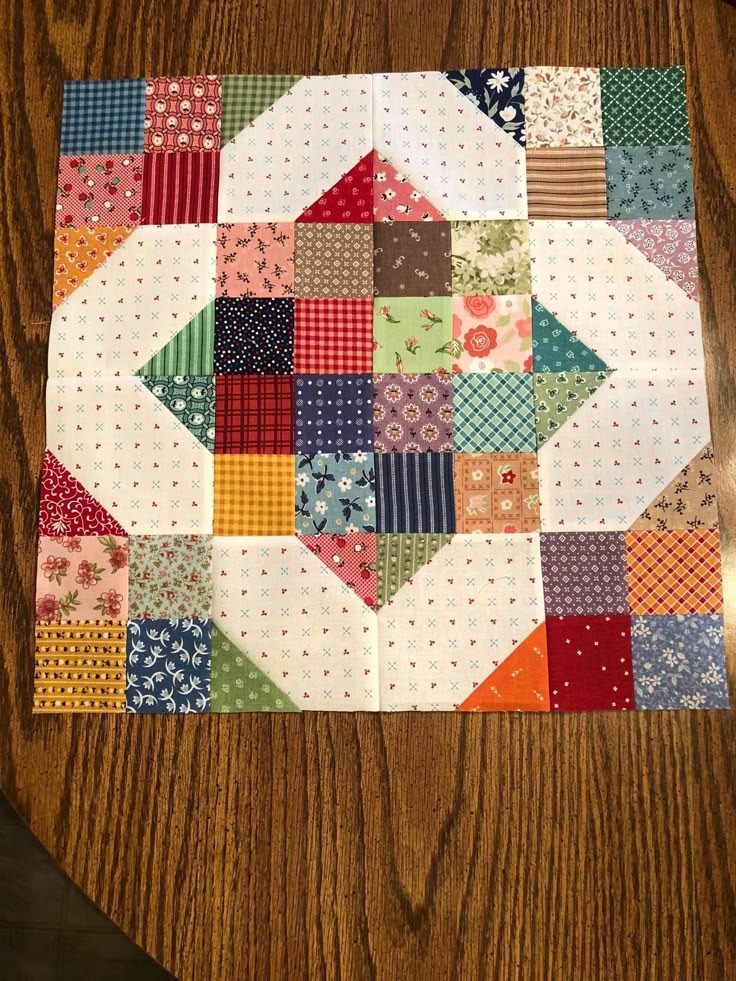
The Arkansas Crossroads quilt block is a timeless classic cherished by quilters across generations. This traditional block, with its strong lines and clear design, has stood the test of time in both modern and vintage quilt patterns. It offers a striking visual effect while being relatively easy to piece together, making it perfect for beginners and experienced quilters alike.
This quilt block typically features a large “X” shape that crosses through the center, symbolizing the idea of meeting points or journey intersections. The visual symmetry it brings to a quilt top can be both eye-catching and symbolic, representing paths crossed or shared experiences. It’s ideal for storytelling through quilting, something deeply rooted in American quilting traditions.
One of the reasons the Arkansas Crossroads quilt block remains popular is its versatility. Whether you use contrasting fabrics or subtle tone-on-tone color palettes, it adapts beautifully. It works well in scrappy quilts, monochrome designs, and even in reproduction-style quilts using vintage fabric prints.

Beyond aesthetics, the block is a favorite because of how easily it can be sized up or down depending on your project. Whether you’re making a baby quilt or a king-size bedspread, the pattern scales effectively while keeping the proportions consistent and clean. It also pairs wonderfully with sashing and border treatments.
Many quilters find that using this pattern allows them to experiment with color placement and fabric contrast. You can alternate light and dark fabrics in specific ways to create secondary patterns when blocks are joined together, adding depth and movement to the finished quilt top.
When it comes to quilt patterns, the Arkansas Crossroads quilt block should definitely be in your portfolio. Not only is it visually dynamic and adaptable, but it also brings a rich historical context and an engaging piecing experience. Let’s dive deeper into its design and how you can make your own.
To get started with your Arkansas Crossroads quilt block, you’ll first need to gather your materials. Selecting quality cotton fabric is essential for durability and ease of sewing. Choose two contrasting fabrics: one for the background and one for the “crossroads” or X-pattern.
For a single 12” x 12” finished block, you’ll need to cut the following pieces:
Start by ensuring your fabric is pressed and squared before cutting. This is critical in any quilt project to maintain precision. Use a rotary cutter, cutting mat, and ruler for best results. Label each piece as you cut so that assembly goes smoothly later on.
It’s important to note that accurate measurements lead to accurate piecing. If you’re creating multiple blocks for a full quilt, it’s a good idea to cut everything at once and stack pieces by type. This makes assembly faster and ensures consistency across your quilt patterns.
Organize your cut pieces on a design board or large table before sewing. Laying them out in the order they will be stitched together gives you a preview of the final result and helps you avoid mistakes in fabric placement. Don’t skip this visualization step!
If you’re working from scraps, make sure your chosen pieces still follow the size requirements. While scrappy quilts can look more playful and eclectic, precision is still key to achieving the visual integrity of the Arkansas Crossroads design. Keep contrast in mind with your fabric choices.
Finally, gather your additional materials: thread, sewing machine, pins, and a 1/4″ foot (recommended for consistent seam allowances). You’re now ready to start sewing your Arkansas Crossroads quilt block.
Now let’s walk through the sewing process. Assembling the Arkansas Crossroads quilt block is straightforward if you follow each step carefully. This block is ideal for chain piecing, which speeds up construction if you’re making a full quilt.
Begin with your small squares. Pair one Fabric A square with one Fabric B square (3.5” x 3.5”). Sew together along one side using a 1/4″ seam allowance. Press the seam toward the darker fabric. Do this for all four square pairs.
Next, attach each of these square pairs to a 3.5” x 6.5” rectangle from Fabric A. Sew along the 6.5” edge so the result is a unit that includes a small block of color and a longer rectangle. Press seams open or to one side based on your preference for quilting later.
Take two of these units and sew them to opposite sides of the 6.5” x 6.5” Fabric B center square. Ensure the smaller contrasting square aligns toward the center. This forms the top and bottom rows of the block. Press seams again as needed.
Now, sew the remaining two units together, matching the square ends together so they form the center horizontal row. Press seams carefully. This row should measure 6.5” x 12.5” when finished. Double-check this to ensure your block aligns perfectly.
Assemble the final block by sewing the three rows together. Start with the top row, attach the center row, then finish with the bottom. Pin at the seams to keep everything aligned and sew using your 1/4″ seam allowance. Press the entire block flat.
Congratulations! You’ve now completed a single Arkansas Crossroads quilt block. Repeat this process for as many blocks as you need to complete your full quilt. This pattern allows flexibility in layout and can be combined with other classic quilt patterns for a unique design.
Once you’ve mastered the traditional Arkansas Crossroads quilt block, it’s time to experiment with creative variations. Switching fabric styles, playing with color placement, and trying alternative arrangements can breathe new life into this classic pattern.
Try using batik fabrics or bold solids for a modern twist. This can make the X-shape of the crossroads stand out dramatically, especially when set against neutral backgrounds. Using bright or gradient hues can also give your quilt a fresh, vibrant feel.
Another idea is to create a scrappy version of the block. Use leftover 3.5” squares and 6.5” rectangles from past projects to build a block that’s full of texture and color. Scrappy quilt patterns often tell personal stories, and this block is perfect for that.
You can also rotate alternating blocks to create a more complex overall pattern. This adds movement and dimension to your quilt top. Combine the Arkansas Crossroads block with other traditional blocks like the Nine Patch or Rail Fence for contrast.
For quilters looking to challenge themselves, try incorporating pieced sashing between blocks. This can turn a simple quilt into a masterpiece with extra depth and structure. Don’t forget to audition different layouts on a design wall before final assembly.
Think about negative space. Instead of filling an entire quilt top, scatter Arkansas Crossroads blocks in a sea of solid fabric. This minimalist design technique brings a modern aesthetic and highlights the beauty of each individual block.
Lastly, consider adding hand quilting or free-motion quilting designs that echo the X-shape of the block. Quilting patterns can enhance the structure and appearance of the block, reinforcing its crossroads motif and providing a beautiful finish.
